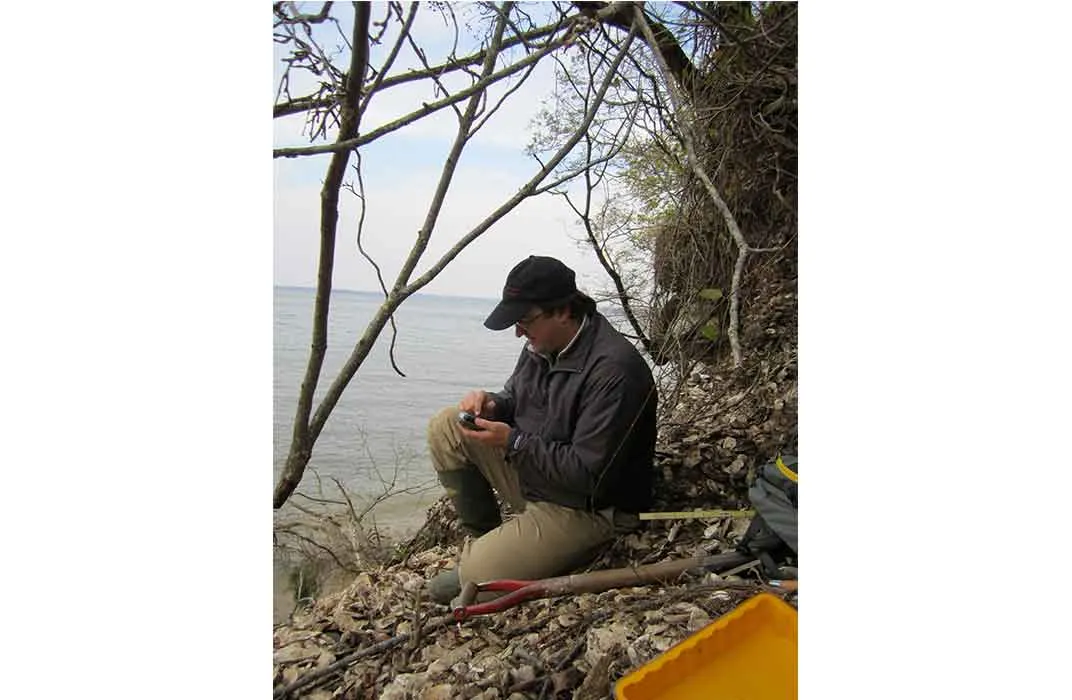How Big Were Oysters in the Chesapeake Before Colonization?
A new multidisciplinary study reveals that yes, oysters were larger and more plentiful before European contact
/https://tf-cmsv2-smithsonianmag-media.s3.amazonaws.com/filer/f6/86/f686c29a-9c91-4305-bb03-396e422d9992/typical-native-american-oyster-depositweb.jpg)
The Chesapeake Bay suffers from something like cirrhosis of the liver. The excess phosphates and nitrogen that pour into the bay used to be filtered by billions of oysters. Today, scientists believe that oyster numbers are sadly depleted compared to the bay of hundreds or thousands of years ago. But comparisons between the oyster population of today to the past has been mostly conjecture—until now.
A new research paper details the first broad study of historical oyster populations throughout the history of the world's largest estuary. This could be a major tool for researchers and policy-makers to use in the course of restoring the bay's health.
Higher historical numbers of oysters had been presumed, but not proven. “For years people have been saying that,” says Torben Rick, director and curator of North American archaeology at the Smithsonian's National Museum of Natural History and lead author of the paper. “A lot of it is just anecdotal. When John Smith came through, he said oysters were everywhere. They were a hazard to ships.”
Rick's group looked for middens—garbage heaps used by Native Americans that provide a window into their diets over time. Organic matter in those middens can be tested for the decay of radioactive carbon 14, which roughly pinpoints the date at which an organism died, up to about 50,000 years ago.
The scientists measured the sizes of shells within each midden. By doing this at many different sites, (including samples of modern oysters) a picture of oyster history began to emerge.

The research suggests that oysters have recently gotten smaller on average, though not by as large a margin as they had expected. “We went into this thing thinking these Native American oysters are going to be bigger,” says Rick, “and to an extent they were, but we didn't find these foot-long oysters that we thought we would find.”
Really big oysters were more common during the Pleistocene era, which ended 13,000 to 11,700 years ago, not long after most scientists think that humans arrived around the bay. After the end of the Pleistocene, oyster shell sizes in middens grew smaller, but then seem to have increased somewhat over time before dropping after European contact 400 years ago. Oyster populations appear to have been steadily maintained at healthy levels during exploitation by Native Americans.
The drop in oyster sizes and numbers after European contact could have resulted from a number of different factors. New diseases were introduced through bilge water and deliberate movement of shellfish that can reduce the lifespan of an oyster. Technology for harvesting oysters also probably changed with the arrival of Europeans. “One of the things that we're always plagued by is when European Americans came into an area they didn't talk about the mundane things that people were doing,” says Rick. “We don't have anything written to go on with technology. The hints that we do have is that a lot of it was just hand collecting. Simple tools to pry oysters out. Maybe rake-like implements. Certainly no dredges, no tongs. No sail-powered dredge. No mining of oysters.”
The Chesapeake Bay as we know it has only been full of water since the end of the Pleistocene as glaciers melted and sea levels rose. Before that happened, a few waterways including extended sections of the modern James and Potomac Rivers coursed through the region. The lower sections of those rivers held oysters in their subtidal regions and nearby middens hold a record of those pre-bay oysters. Few of those ancient underwater middens have been accessible for study. “Modern watermen have been hitting archaeological sites with their gear for years,” says Rick. Researchers are still looking for more.
While oysters are essential for the health of the bay, the commercial appetite for oysters has also been a major incentive for oyster restoration and farming. “I am not a person who would say that no one should eat oysters,” says Rick. “While we advocate for no-take zones, one of our messages is that we shouldn't say people shouldn't eat oysters. While we are conserving them, we shouldn't lose track of that.”
/https://tf-cmsv2-smithsonianmag-media.s3.amazonaws.com/accounts/headshot/JacksonLanders.jpg)
/https://tf-cmsv2-smithsonianmag-media.s3.amazonaws.com/accounts/headshot/JacksonLanders.jpg)